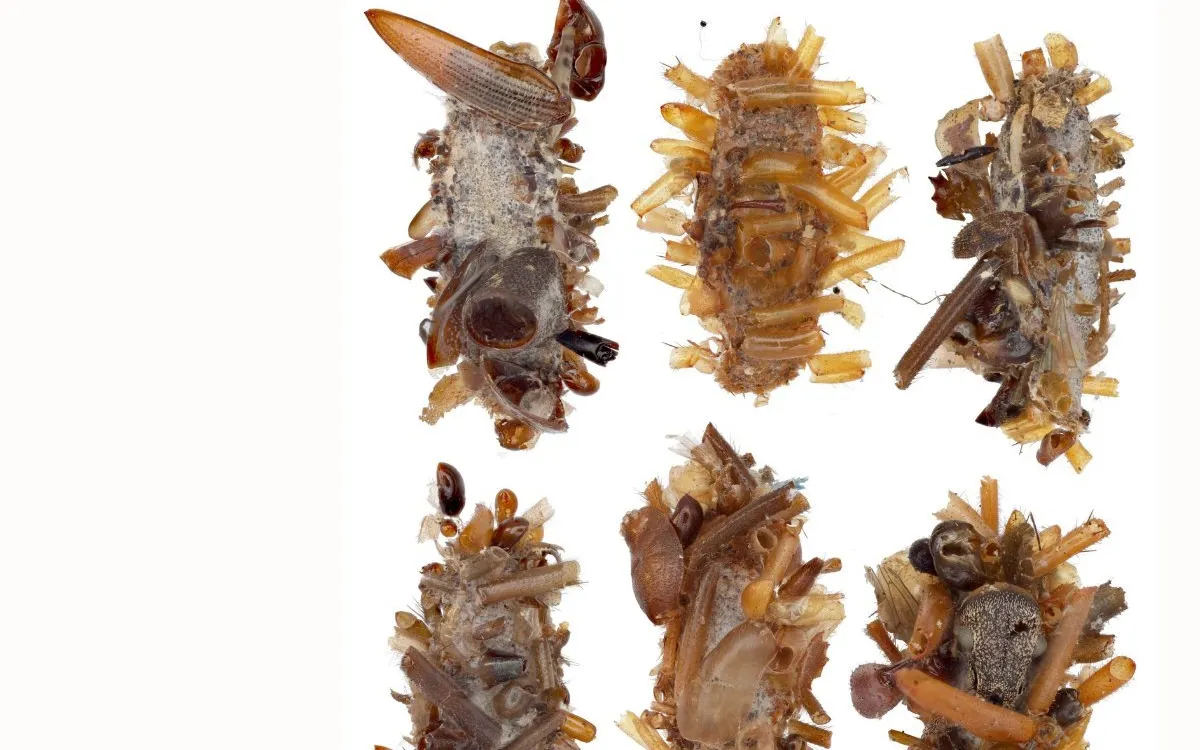
Scientists have made an astonishing discovery of a rare and ancient lineage of caterpillar in Hawaii that employs an extraordinary form of camouflage by wearing the “bones” of insects. This fascinating revelation was detailed in a research paper published by researchers from the University of Hawaii at Manoa in the esteemed journal Science.
The caterpillar, aptly named the “bone collector,” cleverly uses its disguise to blend into a spider’s web, enabling it to prey on smaller insects that become ensnared. Unfortunately, the survival of this unique caterpillar is at risk, as it is only found within a single mountain range on a single Hawaiian island.
Caterpillars are the larval form of butterflies and moths, all members of the insect order Lepidoptera. Typically, these insects feed on plants, making the existence of carnivorous caterpillars an exceptional rarity, with less than 0.13% of all caterpillars known to exhibit such behavior. This already sets the stage for the unusual nature of the bone collector caterpillar.
Lead researcher Daniel Rubinoff and his team have dedicated decades to studying the diverse insects of Hawaii, particularly focusing on the genus Hyposmocoma, which includes over 350 species of caterpillars. The bone collector represents a single species within this lineage, further highlighting the uniqueness of its evolutionary adaptations.
As the name implies, the bone collector caterpillars attach various insect parts—often the discarded remnants of spider meals—and shed spider skins to the exterior of their silken cages. This ingenious form of camouflage allows them to stealthily scavenge and prey on unlucky insects caught in the spider’s web, typically found in tree hollows and rock crevices. Remarkably, the camouflage appears to be effective; researchers have yet to find evidence of these caterpillars falling prey to their arachnid hosts.
Rubinoff likened the caterpillars' existence to “living in the lion’s den,” highlighting the unexpected nature of evolution. "It’s a questionable life choice, but that’s the fun thing about evolution," he stated. This isolated environment in Hawaii has led to unique evolutionary paths that defy conventional expectations.
Rubinoff first encountered these enigmatic caterpillars in 2008, yet consistent funding challenges have hindered extensive research. To date, the bone collector caterpillars have only been found in a 10-mile-long (16-kilometer) area of the Waiʻanae mountain range on the island of Oʻahu. Remarkably, genetic analyses suggest that the lineage of these caterpillars dates back at least six million years, predating the island’s formation by three million years.
Several factors contribute to the declining population of these caterpillars, including deforestation and human-induced environmental disruptions. However, the most significant threat arises from the introduction of non-native invasive species, which has transformed Hawaiian ecosystems into biological deserts. "What’s really killing us is that we have these forest reserves that are mostly invasive species now," Rubinoff explained.
Despite their ability to adapt alongside non-native spider species, the bone collector caterpillars are on the brink of extinction. "This is the last sort of holdout for this entire lineage," Rubinoff noted, stressing the urgent need for conservation efforts. Hawaii is often dubbed the “extinction capital” of the world, a title that underscores the critical situation facing these unique insects.
Rubinoff hopes that his team's groundbreaking research will attract more resources and funding dedicated to the conservation and study of these extraordinary caterpillars. "We absolutely want to understand the genomic basis for how these caterpillars perceive the world," he said. The intricate skills they exhibit in discerning body parts from debris and their ability to adapt metabolically to carnivorous diets indicate profound genetic changes from their herbivorous relatives, highlighting the incredible nature of their evolutionary journey.